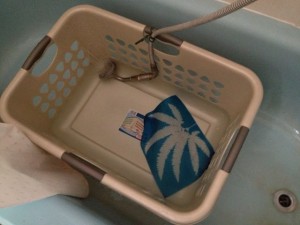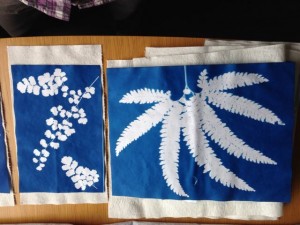This last week I stiffened my spine and sent my YA fantasy book out to beta readers. It got me thinking about the problem of writers and feedback at different stages of the writing process, and different levels of experience.
Feedback is both important and pitfall-ridden.
There may be the occasional writer (Kafka?) who can write amazing stories with no feedback. Most of us need someone else to help figure out what’s working and what isn’t.
The sad irony is that the less experienced a writer is, the more important feedback can be – and the harder it can be to get.
The Problem of Feedback
Feedback is vital, but sadly there is no guarantee that it will be good or appropriate.
Bad or inappropriate feedback can be extremely destructive, especially to a beginning writer who doesn’t have much perspective.
My brother was hot to write after college. He made a good go at it, writing daily and treating it as a job. He got the draft of a fantasy novel together, and handed it out to friends and family for feedback.
Among others, he gave the novel to our high school English teacher – a teacher who had done an excellent job of teaching us to analyze literary works. She also happened to favor literary fiction.
She . . . was not impressed.
Fair enough.
The problem was that my brother valued her opinion very highly, and the way she stated the problem was not “you need lots of practice” or anything more concrete; it was “you need to experience life before you try to write.”
It is true that life experience helps in writing, but unfortunately the teacher’s feedback caused my brother to simply stop writing.
Many very successful authors wind up trunking their first four or five or eight novels. Had my brother kept going, he might well be published long since.
The thing that I find most striking about this is that the feedback was given with the earnest desire to be helpful. And it stopped my brother cold.
How destructive, then, is malicious feedback? Wrongheaded feedback? Feedback that is trying to convert a story from one species to another?
This is all marginally less problematic for a more experienced writer with more perspective, but from all I’ve heard, the doubts never go away completely.
So, what to do?
Safe Feedback
There are a lot of potential sources of feedback out there. They vary significantly in risk.
I think that a beginning writer – or an especially insecure writer – should stick with the safest of these.
Indirect Feedback
Bad direct feedback can be extremely destructive.
Fortunately there are ways to get information about writing and editing that don’t involve exposing your precious work to the withering scorn of others.
The most effective of these is to let someone else expose themselves instead, and then look for useful information in the feedback.
The “Share Your Work” forum on AbsoluteWrite is a great place to do that.
You do have to be signed up officially, but aside from that you can hop on immediately.
Hopeful writers will post chunks of work, usually first chapters or short stories.
Anyone on the forum who is interested can then comment.
Some of the comments are impressions, some are line edits. Some are excellent, some are largely useless.
These critiques provide three valuable things:
- Information on mistakes that you may well have in your own work.
- A view into the range of opinion – there are often completely contradictory pieces of feedback.
- A way to improve your “eye” – and then apply it to your own work.
It is a fine crash course in basic editing, and it provides no risk to the observer.
Safe Feedback
The ideal is to get feedback from a known safe source – someone who will give useful information, and isn’t at risk of crushing you.
This is the ideal. I don’t know how you could find such a source without risk – but if you have a source of safe and effective feedback, value it!
Usually the best you can do is to get feedback in a safe environment. When I attended Viable Paradise, they made it very clear that the critiques should be honest but gentle. If you are considering a workshop or course, try to find out about the flavor of the critiques.
There are some groups that seem to pride themselves on being harsh – apparently equating quality with toughness, and toughness with brutality.
Avoid these!
Write Write Write!
The last safe approach – the one I used for the first couple years – was to simply write. A lot.
Although guided and conscious practice is ideal, any practice is good.
There are many ways to improve the efficacy, including looking at books on writing and editing. I found “Self Editing for Fiction Writers” especially helpful, since it gave concrete examples out of well-known fiction.
Dangerous but Potentially Effective
There are many sources of feedback that can be risky but may have a significant payoff in terms of helpful information. In seeking these out, honestly consider how thick your skin is and how committed you are.
If they say you stink in the harshest way possible, will you be able to keep going?
If so, go for it!
Writing Groups
Many of my fellow students at Viable Paradise had had excellent experiences with writing groups. If you can find a group of like-minded writers, it can be a good source of feedback, while also giving you the benefit of thinking critically about other writers’ work.
There are three major potential problems with a writing group:
- You’re all beginning writers. This doesn’t render it useless – chances are that you’re all rabid readers, which means you’ll have at least some useful opinions on each others’ work. However, you won’t come along as quickly as if you have a more experienced source of advice. It is a somewhat bigger problem if you are intermediate or advanced, and everyone else is beginning. Then you’re at risk of becoming the teacher. Gratifying, but not as helpful to you.
- They’re mean. Usually it isn’t everyone who is mean, but all it takes is one brutal person.
- They don’t read your kind of stories. Writing is writing up to a point, but if you write fantasy and your writing group is made up of literary fiction writers – or vice versa – you won’t be able to effectively evaluate the quality of the story, or give good advice.
Beta Readers
This is where I am!
The risk level varies quite a bit. I minimized it by drawing many of my beta readers from my Viable Paradise cohort – so I know that they at least have some background in kind but useful critiques. I also supplied the first couple chapters to help verify that they were a good match with the story. I want to make my story the best it can be – not change what kind of story it is. So it helps if they like the type of story it is!
So. Fellow writers – good, especially if you have some sense of their likely style.
Friends. Well . . . risky.
It helps if you know they like the type of story you wrote. Even then, think through what will happen if they never give you feedback, or if they give you terrible feedback.
I gave my first completed/edited (now trunk) novel to my then-boyfriend to beta.
He never told me what he thought. I suspect he only got a few chapters in.
It probably wasn’t very good – it’s a trunk novel now – but that silence was almost as damaging as a brutal critique. Maybe more so, since it just left me hanging.
It isn’t a coincidence that I stopped writing for a year or two.
Fortunately I moved on!
Workshops/Conferences/Etc.
My critique experiences at Viable Paradise were very helpful.
Depending on the workshop, it can be a very beneficial experience.
Just do your homework. Most workshops – standalone or associated with a conference – have been around for a while, and will have a known personality.
The participants vary from year to year, so it is always possible a bad egg will sneak in, but this is a comparatively safe resource since there is usually some sort of moderator.
Online Critiques
After you’ve gotten indirect feedback for a while by observing or providing critiques online, you can give it a whirl yourself.
There are a number of online critique forums, including AbsoluteWrite and Critters.
The biggest risk with these is that someone can be brutal – it’s somewhat luck of the draw – but they are usually somewhat regulated, and try to promote playing nicely.
I had very good luck when I submitted things to AbsoluteWrite. I would recommend it – but it is likely to be most helpful once you have the fundamentals down and are trying to refine your craft.
Actually, that goes for pretty much all of these except the indirect feedback method.
Other Opinions?
These thoughts on feedback and where to get it are drawn from my own experience, direct and otherwise.
Thoughts or opinions? Please share!







